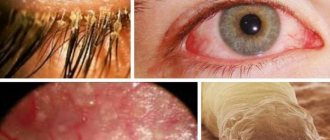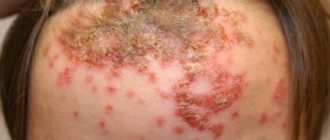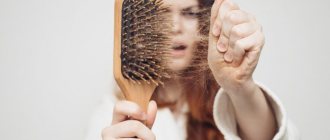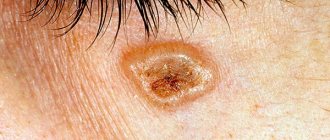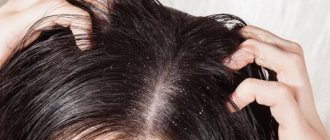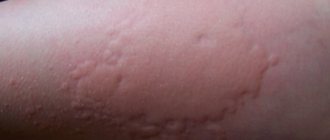Causes of styes on the lower and upper eyelids
The following factors provoke the development of purulent inflammation of the hair follicle on the lower and upper eyelids:
- The presence of an infection of bacterial origin (Staphylococcus aureus), which appears as a result of non-compliance with such hygiene rules as contact of the face with dirty hands.
- Weakened immune system.
- Hypothermia, exposure to drafts.
- Dysfunctions in the functioning of the digestive organs.
- The period of pregnancy, when the female body is weakened and transfers all useful elements to the development of the child.
- Polluted surrounding area.
- The action of demodex mite or fungus.
- Great psycho-emotional and physical stress.
- Improper use and maintenance of contact lenses.
- Compliance with diets and fasting.
- Wrong lifestyle.
- Abuse of bad habits.
The following diseases are associated with the appearance of barley:
- diabetes;
- furunculosis;
- seborrhea;
- helminthic infestation;
- acne and high oily skin;
- stress;
- avitaminosis;
- prolonged eye strain;
- blepharitis, conjunctivitis;
- anemia;
- HIV infections.
Features of treatment in adults/children
The immune system of an adult is fully formed, so inflammation and its consequences are eliminated faster than in small patients. For the same reason, the percentage of diseases in children is higher. A child’s body can give an adequate response to pathological processes only after reaching the age of seven.
In addition to the listed reasons for the occurrence of barley, the children's list is replenished with the following provoking factors.
- Transitional age when hormonal imbalance is noted.
- Wearing lenses. The risk of infection lies in non-compliance with hygiene rules when putting on optics.
- Heredity. Predisposition to the disease is programmed into DNA.
- Infection of the entire family or its individual members with Staphylococcus aureus.
To treat purulent inflammation of the eyelid in adult patients, both traditional methods and special pharmacological agents are used. In severe cases, complex therapy with antibiotics is prescribed.
To eliminate the signs of barley in children, only safe and proven means are used. In case of frequent cases of pustules appearing on the eyelid of a small patient, additional studies are recommended to exclude suspicions of other diseases with similar symptoms.
Reference! An ophthalmologist treats stye.
Treatment options
Depending on the severity of the disease or the patient’s condition, the doctor may prescribe a specific remedy. Various methods can be used in treatment, including traditional medicine, pharmaceutical drugs or surgery. Let's consider each of these methods separately.
Features of treatment
Pharmacy drugs
"Tobrex"
As a rule, eye drops need to be instilled about twice a day, but in rare cases the doctor may change the dosage of the drug or the duration of the therapeutic course. Various ointments are often used as a complement to these remedies. When treating barley, hydrocortisone, erythromycin, tetracycline and other types of ointments are used. Such products are placed under the eyelid several times a day.
Preparations for the treatment of barley
Folk remedies
In addition to traditional methods of treatment for barley, traditional medicine is also used. With their help, you can not only alleviate the symptoms of the pathology, but also completely cure stye on the upper eyelid. All recipes consist of natural ingredients, so they have no contraindications, with the exception of individual intolerance to a particular product. Despite its effectiveness, folk remedies should be used in conjunction with drug treatment, but not instead of it.
Table. Recipes for folk remedies for barley.
| Product name, photo | Application |
| Black tea | Simply brew one black tea bag and then apply it to the affected area. Make sure the compress is warm. To save money, you can brew one bag several times. It is recommended to repeat the procedure 2-3 times a day. |
| Herbal collection | To prepare the herbal mixture, you need to mix 10 g of wild rosemary, bird cherry leaves, birch buds and chamomile flowers in one bowl. Then pour 200 ml of boiling water 1 tbsp. l. prepared collection and cook in a steam bath for 10 minutes. The finished decoction should be infused for 30 minutes, after which the product is taken 50 ml 3 times a day. |
| Aloe | Grind one small leaf of the plant and pour 200 ml of cold water. Leave the product in a dark place for 24 hours, then use it as an eye lotion. |
| Calendula decoction | To prepare a medicinal decoction, you need to pour 300 ml of boiling water over 15 g of the plant and cook over low heat for 10-15 minutes. Then the broth should infuse. To do this, wrap the pan in a warm towel and leave for 2 hours. Strain the finished product through cheesecloth and apply lotions to the affected area 2-3 times a day. The duration of the procedure is 10 minutes. |
| Coriander decoction | The technology for preparing the decoction is no different from those mentioned above: pour boiling water over 1 tbsp. l. crushed plant and leave for 30-40 minutes. After the broth has cooled, strain it and take it internally, and also use it as a lotion. The duration of the therapeutic course is 2-3 weeks or until symptoms are completely eliminated. |
Stye under a child’s eye: how to treat?
This disease manifests itself and progresses equally in both children and adults.
The only point is that home treatment of barley in a child should be approached more carefully. The safest way is regular warm compresses of strong black tea (which, by the way, are also used for rough skin on the elbows)
It is not recommended to treat the abscess with antiseptics, as the child may twitch involuntarily and injure the eye.
Consultation with a doctor is required in any case, even if the child feels well, is mobile and there is no loss of appetite. You should consult a doctor as soon as possible if the occurrence of barley is accompanied by an increase in temperature, anxiety in the baby, or enlargement of nearby lymph nodes.
Why does stye appear?
The inflammatory process that forms in a certain area of the upper or lower eyelid is called hordeolum (hordeolum). This disease occurs in 80% of people of different ages - both children and adults.
The inflammation is acute and occurs due to the entry of pyogenic microorganisms into the meibomian gland or ciliary follicle. This process is most often caused by Staphylococcus aureus, less often by streptococci.
The most common stye is in the lower eyelid, but there are cases when the inflammatory process occurs in the upper eyelid. Depending on the location, barley is divided into two types:
- Internal - occurs due to inflammation in the meibomian glands on the inside of the eyelid. The ducts of the gland become clogged due to the inflammatory process, and barley begins to form. If treatment is not started on time, internal styes on the eye can cause serious pathological processes (for example, chalazion of the eyelids).
- External - occurs due to blockage of the sebaceous gland or hair follicle due to the ingress of bacteria.
At the beginning of the inflammatory process, a single barley forms, but if left untreated, the infection begins to spread to neighboring hair follicles. This type of disease is called multiple barley, and is typical for patients with weakened immunity.
The cause of styes is the penetration of pathogenic bacteria into the eye. Harmful microorganisms can remain in the body for a long time and not manifest themselves in any way. But in the presence of certain factors, microbes are activated and cause an inflammatory process.
How does stye appear on the eye? The photo shows a healthy eye and an eye with stye
Three main factors provoking the development of barley:
- Failure to comply with hygiene rules.
- Hypothermia.
- Weakened immunity.
The conjunctiva of the eye is very sensitive to harmful bacteria, therefore, with the most minimal contamination, an inflammatory process is formed.
Poor eye hygiene provokes the spread of infection:
- Low-quality, cheap or expired cosmetics;
- Rubbing the eyes with unwashed hands;
- Using a common towel for washing;
- Cosmetics not removed (not washed off) on time;
- Failure to comply with the rules for using contact lenses.
Hypothermia itself does not cause the formation of stye on the eye, but it can provoke inflammatory processes in the body against the background of a weakened immune system.
Other factors in the development of stye may include:
- Avitaminosis;
- Concomitant chronic and infectious diseases;
- Endocrine disorders (especially diabetes mellitus;
- Immunodeficiencies;
- Ophthalmological diseases (demodicosis, blepharitis);
- Pathologies of the digestive tract;
- Stress, nervous disorders, chronic fatigue.
Stress is a common cause of the development of stye. Those
at risk of developing stye include children, who, as a rule, neglect the rules of personal hygiene, and women who abuse low-quality cosmetics.
Causes and types of barley
Barley is treated when the eyelids are affected by Staphylococcus aureus:
- Inflammation of the meibomian gland lobule is the cause of internal barley (meibomitis), it is less painful.
- Initially, there is a sensation of a foreign body in the eye, a slight swelling, and touching is painful. It turns red and increases in size.
- Within 3-4 days, the external abscess matures - the swelling turns into a bright red tubercle. The eyelid swells, pain increases, and pus separates from the yellowish top.
- After 1-2 days it breaks out spontaneously, the pus comes out, the pain and swelling disappear.
Sometimes not one, but several inflammations form simultaneously on the eyelids of both eyes.
An acute onset and rapid resolution distinguish external barley from internal barley; it develops into chalazion - a chronic inflammation that is associated with blockage of the exit channel of the gland and the accumulation of secretory fluid in it. Chalazion is painless.
- Hypothermia.
- Eating disorders, rapid growth of the child.
- Decreased immunity.
- Self-poisoning of the body as a result of helminthic infestation, constipation, bloating and abdominal pain, diseases of the gastrointestinal tract.
If your eyes often become inflamed, turn red after swimming in open water, or cause hordeolum on the eyelids, include foods containing vitamin A in your diet: butter, cream, chicken egg yolks, kidneys, fermented milk products, fish liver, fish oil. Plant foods are useful: zucchini, apricots, carrots, sea buckthorn, persimmon.
Increase your intake of vitamin B2 (riboflavin). In some cases, it helps to quickly cure barley - the abscess goes away in 1 day. The body does not accumulate riboflavin; it is destroyed in light. There is a lot of it in milk, vegetables, eggs, beef, liver, herring, fatty cheeses, legumes, brewer's yeast, and walnuts.
Signs
The formation of a cavity inside the eyelids begins with inflammation.
Lymphocytes arrive at the site of infection, causing swelling. The eyelid turns red, pain appears around it, and sometimes itching. If urgent treatment measures are not taken, a purulent infiltrate forms inside the cavity, and the eyelid increases in size.
When you move the eyelid away, compactions are visible inside the mucous membrane, yellow on the inside, hyperemic on the edges.
In advanced forms of the disease, the affected area increases sharply in size, and the patient cannot open his eyes. Body temperature rises. General signs of illness appear, which include fatigue, headache, lethargy, and body aches.
2-3 days after the onset of the disease, the barley should open on its own. The pus inside it flows out. If this does not happen, the compaction increases sharply in size, so surgical intervention is necessary.
What to do if there is stye on the lower and upper eyelids
1. Pour 200 ml of boiling water over a teaspoon of birch buds, leave, apply as a lotion several times until the condition returns to normal.
2. Take 3 tablespoons of plantain grass and pour boiling water over it. Wrap the container with the infusion, leave for several hours, then strain. Apply the composition several times a day.
3. Brew black strong tea. Use fresh tea leaves to wash the eyes or dip a cotton ball into the drink and secure it in the affected area. The compresses are kept for 15-20 minutes, after which they are removed. The procedure is carried out up to 4-5 times a day.
4. Lotions made from chamomile infusion. Chamomile infusion has an antiseptic and anti-inflammatory effect on the site of the disease. Pour boiling water over two teaspoons of dry herbs. Leave the mixture to infuse. Strain the infusion, dip a cotton ball into it and apply lotions 3-4 times a day for 7-10 minutes.
5. Dill. Dill seeds relieve inflammation, eliminate swelling and promote recovery. To prepare the healing composition, two tablespoons of dill seeds are ground in a mortar and soaked in 2 glasses of cold water. Bring the mixture to a boil, heating over low heat. Next, the composition is cooled and used for washing the eyelid or applying compresses.
6. Calendula will speed up recovery. The composition is prepared as follows: pour a tablespoon of inflorescences with a glass of boiling water, leave in a warm place for half an hour or more. Soak cotton pads in the medicinal mixture and make compresses.
7. Cauterization with propolis tincture. Press a cotton swab with tincture onto the site of inflammation for a few seconds. Perform the procedure 4-5 times a day. Care should be taken not to damage the cornea. The disease disappears almost completely after a day.
If an illness appears on the lower eyelid, the entire eye area should be treated to prevent the spread of infection. All procedures that need to be performed on the upper eyelid are carried out with the eye closed so as not to damage the mucous membrane of the eye.
We must not forget that all lotions, washings and cauterizations are performed only until a pustular lesion has formed.
Treatment of barley with folk remedies
Before treating stye on the eyelid, you need to determine at what stage the inflammatory process is. The choice of treatment method depends on the stage of development of the disease. At the very beginning of the appearance of stye, when there is slight tingling, slight redness and discomfort in the eyelid area, you can cure stye quickly at home, even within a day, using two main methods:
- Cauterizing the eyelid with an antiseptic;
- Warming up with dry heat.
Treatment of external styes on the eyelid
To cauterize barley you will need a cotton swab or a small cotton wool pad, and an antiseptic of your choice:
- Camphor alcohol;
- Zelenka;
- Medical alcohol diluted with water (1:1);
- Iodine.
A cotton swab is moistened in an antiseptic solution, after which the affected area is cauterized for a few seconds. This procedure can be carried out several times a day. The main condition is that cauterization should be carried out with the eyelid closed to avoid the antiseptic getting into the eye.
You can try to cauterize the ripening barley with a clove of garlic, which has a strong antiseptic effect. It is enough to cut a clove of garlic in half and apply it to the source of inflammation. But this method is unsafe, because... may burn the skin on the eyelid.
Warming up the eyelid can be done in several ways:
- A hard-boiled egg is wrapped in clean cotton cloth and applied to the site of inflammation for 4-6 minutes.
- The salt is heated in a frying pan and placed in a small bag (or a regular sock).
- Place hot boiled potatoes in a thick cloth and attach to the barley.
- Pour boiling water over the bay leaf and leave for ten minutes. Remove the leaf from the boiling water and apply it to the sore eyelid until it cools, and then take the next leaf and repeat the procedure.
- Cut the onion into rings and place in a frying pan with vegetable oil. As soon as the onion is warm, place it on a cotton cloth and apply it to the sore spot.
Warm tea bags and a boiled egg can be used to warm the stye on the eye for a quick recovery.
Warming is carried out until the compress cools down.
Treatment of internal stye under the eyelid
Internal styes on the eye can also be treated with heating, but manipulations will need to be carried out for a longer time, and instead of cauterization, lotions and compresses are used.
How to treat stye on the lower or upper eyelid using lotions, folk remedies and recipes:
- Tea brew from barley. To quickly cure barley, make a strong infusion of tea, this is an old folk method of therapy. It can be used simply to wash the eye, or dip a cotton infusion into the drink and apply it as a lotion to the sore eye. Keep compresses with tea on the eye for about 15-20 minutes, the procedure is repeated 4-5 times a day.
- Chamomile for lotions. Chamomile has anti-inflammatory and healing properties in non-traditional medicine. Pour boiling water over two teaspoons of dry herb and let it brew for a while. Apply lotions to the affected eye 3-5 times a day for 7-10 minutes.
- Aloe juice for eye styes. Aloe leaves have a stretching and anti-inflammatory effect in many human diseases. Cut a small aloe leaf into small pieces and squeeze the juice out of them. Mix aloe juice with clean boiled water and let it brew for about 8 hours. Apply a cotton pad soaked in the infusion to the barley 3-4 times a day.
- Dill to relieve inflammation. Dill seeds help relieve swelling and eliminate redness in the inflamed area. Grind a couple of tablespoons of dill seeds in a mortar and add cold water (2 cups). Bring the mixture to a boil over low heat, and then cool. Using the infusion, you can wash the sore eye or make compresses based on it.
- Calendula is also used to relieve inflammation. Prepare an infusion of calendula according to a popular recipe: pour a glass of boiling water into a tablespoon of inflorescences and infuse for half an hour. Cotton pads soaked in calendula infusion are applied to the sore eyelid.
Aloe juice is a unique medicine that will help cure stye on the eyes of adults and children.
If barley appears on the lower eyelid, then the entire eye area needs to be treated so that the infection does not spread further. On the upper eyelid, procedures should be performed with the eye closed so as not to damage the mucous membrane of the eye.
Treatment with folk remedies and methods can be carried out in combination. For example, after washing the eyelid or applying a lotion, you should carry out the procedure of warming up or cauterizing the stye. This will help cure stye quickly in just a few days.
If an abscess appears, you should stop all home treatments and turn to medications for the treatment of stye, having first consulted an ophthalmologist.
Treatment methods
Barley is, first of all, a purulent inflammation, and not just an unpleasant disease. The symptoms of stye on the eye include the following factors: it causes inflammation of the outer eyelid, and an infection gets into the sebaceous gland or hair follicle.
At the same time, the edge of the eyelid itches, swells, and after a few days a yellow tubercle appears on it in which pus accumulates. Naturally, walking around with such an unflattering thing is not comme il faut for anyone, and therefore recipes begin to be collected according to the plot “from the world.”
At the same time, very few people go to the doctor, and almost no one knows about proper treatment. The stye itself is harmless if left undisturbed, but it is very inconvenient and causes a lot of discomfort to its wearer.
But incorrect diagnosis and incorrect treatment can cause real danger. Thus, a simple attempt to squeeze out pus usually causes infection to enter the blood vessels, and an ordinary stye on the eye, the symptoms of which do not portend trouble, can turn into sepsis (blood poisoning) or meningitis (inflammation of the membranes of the brain).
And in these cases, very serious treatment is necessary. It should be no less significant if, under the guise of barley, as often happens, other diseases are hidden that only a doctor can diagnose.
But how can you quickly cure stye on the eye yourself, without resorting to the help of doctors? After all, in different cases it may be necessary to provide yourself with emergency assistance while doctors cannot reach the call for some reason.
What to do when stye appears First of all, you should not wear makeup, as it will only harm; Do not pierce the stye or try to squeeze it out. Barley that has not yet ripened can be cauterized with alcohol; it is also useful to drop special drops into the affected eye (0.3% cypromed or chloramphenicol).
You can also apply dry heat and smear the eyelid with a special ointment, but these remedies only help with the initial stage of the disease. You cannot do without antibiotics if barley is accompanied by an increase in body temperature.
But more complex symptoms such as swelling, redness or enlarged lymph nodes, which occur quite often, require more complex treatment and, as a result, medical intervention.
Moreover, surgical intervention has one very important advantage: it not only eliminates barley, but also almost completely eliminates the possibility of its reoccurrence. Well, it’s better not to treat stye with folk remedies at all, but for those who still want to try them, here are a couple of tips:
Well, it’s better not to treat stye with folk remedies at all, but for those who still want to try them, here are a couple of tips:
- Aloe helps a lot in such situations. Squeeze out a little juice from this plant, dilute it with boiled water (ratio one to ten), moisten a cotton ball with it and make lotions
- If you don’t have aloe on hand, then boil potatoes and make a compress from it
- Apply plantain leaves to the inflamed area, but be sure to rinse it before doing so to avoid further infection.
Features of treatment in children
This type of disease occurs much more often in children than in adults, and the reasons for this can be very different. The main feature in this case will be the detection of the disease at an early stage.
Children cannot always explain what hurts them, where it hurts and how, so parents most often discover the disease at its peak. The main symptom is that the child rubs his eye very often, is capricious, and may complain of a headache and fever.
The manifestation of these symptoms indicates that the process of infection has begun.
It is important for parents to remember that a child’s body is much more susceptible to medications than an adult.
And that is why it is forbidden to independently treat barley in a child with medications. Only after undergoing a medical examination by an ophthalmologist can you use the prescribed drops or ointment.
When prescribing a course of treatment, the attending physician takes into account many factors, such as: the child’s allergic reaction, individual characteristics, stage of development of the disease, and much more.
If it is impossible to immediately seek help from a doctor, you can begin to treat barley yourself with folk remedies.
What can be done to cure it?
Barley therapy is aimed at eliminating the external manifestations of the disease and destroying the infection. For this purpose, external means of traditional and folk medicine are used.
Medicines
To get rid of stye on the eye, various creams, gels, ointments or eye drops are used:
- Tetracycline ointment (1%);
- Erythromycin;
- Hydrocortisone ointment;
- Phloxal;
- Sodium sulfate (drops);
- Oftalmoferon;
- Levomycetin;
- Tsipromed.
The use of certain agents depends on the location of the barley.
If the source of inflammation is inside the eyelid, then it is rational to use drops or put ointment under the eyelid with a sterile stick, but only a doctor can do this. External stye is easier to treat. It is enough to lubricate it with the medicine and secure the product with a plaster. The entire course of treatment takes no more than 5 days for barley without complications, when the infection has not spread deeper. Therapy is carried out at home, but treatment can only be prescribed by a doctor.
Folk remedies
With a mild form of barley, traditional medicine will help. Let's highlight the most popular and effective ones:
- Alcohol. You need to lubricate the barley with a cotton swab dipped in alcohol. The procedure is carried out daily every 2 hours. This will help dry out the stye and kill the infection. Treatment is only available for external stye. Instead of alcohol, you can use brilliant green, although this is not aesthetically pleasing, it is no less effective.
- Tea. It is necessary to brew strong black tea without sugar. First, they wash the eyes with it, and then wrap the tea leaves in gauze and make a compress on the sore eye. The procedure is carried out overnight. The stye will go away on the 3rd day.
- Boiled eggs. First you should boil a chicken egg and peel it before it cools down. The egg is applied while still warm directly to the barley. This will help the formation mature faster and release pus.
- Onion. Pour sunflower oil into a frying pan and fry a slice of onion in it. After this, the onion is wrapped in gauze and applied to the eye so that the sunflower oil also gets on the barley. This will soften it and cleanse it of pus.
- Salt. Dissolve 1 tablespoon of salt in a glass of warm water. A cotton swab is moistened in the resulting solution, which is used to treat the formation at least 5 times a day. Soon the stye will burst and go away.
Herbs
Good results can be achieved with the help of herbal preparations that have a cleansing and anti-inflammatory effect:
- Plantain. Fresh plantain leaves are washed with clean water and crushed a little so that the juice begins to release. They are applied to the barley for 5 minutes and a new leaf is taken. The number of repetitions is not limited. This is a good disinfectant against any infection.
- Common toadflax. Take 1 teaspoon of herb per glass of boiling water and leave for 1 hour. A cotton swab or gauze is moistened in the resulting infusion, which is then applied to the sore eye.
- Eyebright and chamomile. Take a teaspoon of each herb per glass of boiling water and leave for 30 minutes. The infusion is carefully filtered so that there are no solid particles and 3 drops are instilled into the eye 3 times a day.
- Dill seeds. You need to grind the dill seeds and brew them in boiling water (1 teaspoon per glass of water). The seeds are infused for 15 minutes. Gauze or a tampon is soaked in the infusion and then applied to the sore eye, preferably overnight.
- Aloe. First you need to squeeze the juice from the aloe leaves, which is then diluted with water 1 to 10. The solution is used for compresses on the eyelid and for eye drops.
What is not recommended to do?
If barley appears, then under no circumstances should you do the following:
- scratching or rubbing your eyes;
- use contact lenses;
- pierce or attempt to open a mass on the eye;
- heat with hot steam.
If these precautions are neglected, there is a risk of aggravating the situation or causing blood poisoning, that is, sepsis. The infection can spread to the eye and cause severe inflammation that can lead to vision loss.
Kinds
Considering the location and the number of inflamed points, barley is divided into two types.
External - located along the edge of the eyelid, clearly visible. This type is the most common. Characterized by rapid spreading to adjacent tissues. The danger of external styes lies in the increased risk of the formation of a wound or purulent abscess in the affected area of the eyelid.
Internal - the source of inflammation is localized in the cartilage of the eyelid plates. The main reason is suppuration of the meibomian glands. The abscess is not visible from the outside of the eyelid; only swelling and redness are noticeable. The danger of this type is the development of chalazion.
The external appearance of a purulent formation on the eye is considered more dangerous than the internal one. This is explained by the danger of infection of the eye if pus is opened and gets into the mucous membrane.
In medicine, barley is also classified by the number of pustules in the area of damage to the tissue of the eyelid. If 2 or more white heads are formed at the same time, then the impact of both one and two inflammations is possible. In this case, the upper and lower eyelids may be affected simultaneously in the affected eye. This etiology of the disease often indicates a weakened immune system.
Important! Barley cannot be left without treatment due to the high risk of complications and vision problems.
What is stye on the eye?
Barley on the eye is a disease of the eyelid, characterized by inflammation of the hair follicle of the eyelash, the Zeiss sebaceous gland or the lobule of the meibomian gland.
Other names for the disease are hordeolum.
The hair follicle and sebaceous gland of Zeiss are located on the outside of the eyelid, and the meibomian gland is located inside, and therefore, they separate the external or internal barley. Another input from this information is that it is more correct to call this disease stye of the eyelid, and not the eye, however, to expand the circle of readers, in the article we will call it stye of the eye.
The main symptom of stye is inflammation and swelling of the eyelid, which, as the inflammatory process develops, turns red, increases in size, begins to hurt, and then a sac with purulent contents forms.
The main culprit of barley on the eyelid is Staphylococcus aureus (about 95% of all cases of the disease), however, inflammation is unlikely with strong immunity, so the development of the disease is due to a combination of the two above factors.
Development of the disease
The development of barley, as we have already said, is possible due to a combination of two main factors - penetration of an infection under the skin, in our case staphylococcus and weakened immunity.
Staphylococcal infection is almost always present on the surface of the skin, but the body’s protective functions do not allow it to spread inside the body, however, some factors that weaken the immune system still play an important role in the development of staphylococcal diseases.
Among the main reasons for a weakened immune system are stress, hypothermia, the presence of various diseases, especially infectious ones, and vitamin deficiency (hypovitaminosis).
Of course, if a person adheres to the rules of personal hygiene - does not touch his eyes or face with dirty hands, then the spread of infection is also minimized.
Development of barley. The development of barley begins with the penetration of infection into the eyelash follicle, which is actually a “micropocket” for the eyelash, and moving further, staphylococcus settles in the eyelash bulb, which is its root or a small branch - the Zeiss sebaceous gland. If the infection penetrates under the eyelid, it can settle in the meibomian gland duct. For a better understanding of the localization of the disease, below is the structure of the eyelid with these places (highlighted in red):
Next, the infection begins to actively multiply in these places. At the same time, an inflammatory process develops. First, at the site of the inflamed bulb, healthy cells die and begin to fester. The site of inflammation begins to swell, turn red, increase in size, forming some kind of hard compaction. In addition to external signs, as the disease develops, a person feels severe itching, and when touching the inflamed area, pain.
Due to the peculiarity of the localization of potentially vulnerable areas of stye formation, swelling and pustules appear only on the edges of the upper or lower eyelid.
The formation of an abscess usually occurs 2-4 days after infection of the eyelid. At this stage, the conjunctiva also turns red. A small ball with yellowish purulent contents forms on the seal. More than one abscess can also form on one eyelid.
Full ripening of barley occurs in 3-7 days.
Severe infection against a background of weakened immunity can additionally cause an increase in body temperature to 38 ° C, nausea and other signs of intoxication of the body.
After full ripening, usually on the 3-4th day, under the pressure of purulent masses, the abscess usually breaks through, the pus along with dead tissue comes out, after which the pain goes away and the stye on the eyelid resolves on its own, however, if the stye does not go away for more than one week, contact ophthalmologist. After spontaneous opening of the abscess, the swelling quickly subsides, and literally the next day, only slight swelling remains, but the redness of the eyelid remains for another couple of days.
Sometimes the abscess does not open without permission, and the barley spontaneously resolves, but there are cases when the usual form of the disease turns into the so-called cold barley (chalazion). A characteristic feature of chalazion is the long development and course of the inflammatory process, which lasts about 1-2 months. In some cases, if a chalazion does not go away on its own, it requires surgical removal.
Stye inside the upper eyelid and its treatment
Meibomitis is an ophthalmological disease accompanied by inflammation of both the sebaceous gland and the hair follicle. The abscess provokes symptoms such as red eyes, soreness and severe itching.
Causes of the disease
Similar to external inflammation, internal stye on the eye is infectious in nature. The causative agent of bacteria enters the eyeball from the external environment, which is why the active reproduction of microorganisms begins.
Ophthalmologists note a whole group of factors that can provoke an abscess inside the eyelids:
| Accompanying illnesses | Seborrhea – disruption of the sebaceous glands |
| Problems with the activity of the meibomian glands | |
| Diabetes | |
| Endocrine gland dysfunction | |
| Diseases of the gastrointestinal tract | |
| Hormonal imbalances | |
| Wrong lifestyle | Violation of personal hygiene rules |
| Prolonged use or contamination of contact lenses | |
| Frequent smoke exposure to the eye due to heavy smoking | |
| Regular stress and physical exhaustion | |
| External factors | Poor quality or expired cosmetics |
| Hypothermia | |
| Entry of dust and dirt particles | |
| Mechanical damage to facial skin |
Symptoms of internal stye
As a rule, the clinical picture of the development of the inflammatory process does not differ when the abscess is located inside the eye rather than outside. First of all, the patient is concerned about the feeling of dryness and sand getting into the eye. Later, the following signs of the disease may be observed:
- Lymph nodes become enlarged;
- There is heat in the body;
- I'm worried about migraine.
The most important symptom of internal stye, which is most often present in photographs of patients, is a yellow or white formation on the inside of the upper eyelid. It resembles a pea in size, but causes swelling and hyperemia, as well as inflammation of the conjunctiva. While the stye on the upper eyelid is ripening, the patient also suffers from pain, which intensifies upon contact with the inflamed eye. After about 2-3 days, the stye opens inside the eye and pus flows out. To prevent purulent masses from entering the mucous membrane, surgical treatment is required.
Treatment method
- There are different forms of physical therapy to remove styes in the initial stages. First of all, exposure to microwaves and ultraviolet radiation demonstrates high effectiveness in treatment. Dry air can also be used - infrared, and in case of a complicated form of internal stye on the eye, infrared irradiation is used as part of complex therapy.
- Drug therapy is aimed at eliminating unpleasant symptoms, as well as the infection itself in the outer eyelid. Doctors advise using immunostimulants, antiseptics, anti-inflammatory and antibacterial agents, and in some cases even antibiotics, which almost everyone has in their home. If a viral infection is diagnosed, antiviral drugs may also be prescribed.
- If conservative treatment does not help, the abscess can be eliminated surgically. The surgical procedure involves removing a purulent mass from the stye using special instruments and under anesthesia. The operation lasts only half an hour, and after it the patient is given a special bandage over the eye.
It is important to understand that the treatment of internal styes must be carried out with extreme caution, since with the wrong approach there is a risk of damaging the mucous membrane. First of all, experts do not recommend treating an abscess in the back of the upper eyelid with alcohol-containing preparations and brilliant green.
ethnoscience
Unconventional therapy consists of using remedies that are aimed at eliminating symptoms, relieving inflammation, swelling, redness of the eyelid, and accelerating the healing process.
- In the initial stages of the development of the disease, before the formation of an abscess, it is recommended to use dry heat. This technique helps accelerate the process of maturation of the purulent head and rapid recovery. The heat source can be a hard-boiled chicken egg. The cooked egg must be wrapped in natural fabric and placed on the inflamed eyelid. Hold the egg until it cools completely. There is no need to clean it, so it will stay warm longer.
- To heat the barley, you should use table or sea salt, flax seeds, and dill seeds. A small amount of salt and seeds must be heated in a frying pan without adding sunflower oil. Pour the contents of the frying pan into small pre-prepared fabric bags. The filled bags are applied to the inflamed eye and held until they cool completely.
- Potatoes can be a source of dry heat. Several small potatoes need to be boiled, peeled, and mashed. The prepared puree should be wrapped in a natural cloth or napkin and applied to the formation on the eyelid.
- Lotions based on birch buds are highly effective. To prepare them, you need to combine a teaspoon of raw material with 250 ml of boiled water and leave for 2 hours. Use the finished product for lotions. The manipulation should be performed about 3 times a day until complete recovery.
- To prepare lotions, plantain should be used. You need to take 3 tablespoons of the plant and combine it with 250 ml of boiling water. Cover the container with the medicine with a lid, wrap it in a blanket, and leave for at least 2 hours. Use the filtered product as a lotion about 4 times a day.
- The healing properties in the treatment of barley are distinguished by a remedy whose main component is aloe. To prepare it, you need to grind a medium-sized leaf to a mushy state. Add the resulting slurry to 200 ml of chilled purified water. The liquid should be infused for about 12 hours. The finished product can be used to wash sore eyes and use as a lotion. Freshly prepared aloe juice is also used. Before use, it must be diluted with boiled water, maintaining a ratio of 1:10.
- Garlic will help eliminate stye on the lower eyelid. The product contains 0.5 cloves of garlic, crushed to a mushy state, 0.5 tablespoons of alcohol. The mixture of components must be infused in a dimly lit room. The inflamed eyelid should be treated with the finished product. When carrying out manipulations, safety precautions must be observed. Contact with the eye can cause damage or burn the mucous membrane of the eyeball.
- It is possible to eliminate the manifestations of internal barley with a cake. It contains dry rye bread and flower honey. The cake should be applied to sore eyes several times a day until complete recovery. A herbal decoction of chamomile, calendula, eyebright, and plantain has soothing, antimicrobial, and anti-inflammatory properties in the treatment of barley.
- Chamomile has healing properties. To prepare a chamomile-based product, combine a spoonful of plant material with 250 ml of boiling water. Wrap the container with liquid in a warm towel and leave for 30 minutes. The prepared tincture should be filtered, moistened with a cotton pad and applied to the inflamed eyeball at least 4 times a day.
- To prepare calendula tincture, you need to add 3 tablespoons of the herb to a glass of boiled water. After 30 minutes, the inflamed eyelid should be washed with the resulting medicine. Apply a cotton-gauze pad soaked in calendula tincture to the damaged eyeball.
- Eyebright herb is characterized by disinfecting properties in the treatment of barley. You can enhance its effect by adding chamomile. The composition of the medicine includes 2 tablespoons of herbal mixture, 200 ml of boiling water. After 30 minutes, the brewed herb is taken out of the water, placed on a napkin or sterile tissue, and applied to the inflamed eyelid.
He will give recommendations on the use of a particular remedy depending on the stage of development of the disease and drug therapy.
